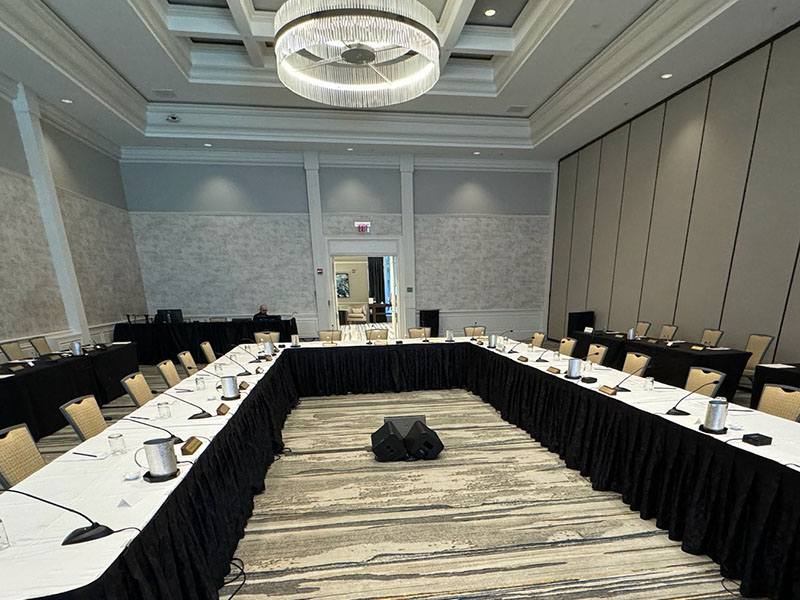Hybrid Board Meeting Checklist: Technology, Logistics, and Communication
As remote work and digital collaboration continue to evolve, hybrid board meetings have quickly become a standard for organizations that need to connect leadership teams across multiple locations. These meetings combine in-person and virtual participation, offering flexibility and wider engagement. However, planning a hybrid board meeting involves more than simply setting up a video call. Success requires careful coordination of technology, logistics, and communication to ensure a seamless and productive experience for all participants.
If you’re organizing a hybrid board meeting, having a comprehensive checklist can make the difference between a smooth session and a frustrating one. Below, we break down the essential areas you need to cover for a flawless event.
Technology: Building a Reliable Foundation
Technology is at the core of every hybrid board meeting. From high-quality audio to stable streaming capabilities, the right AV setup ensures that both in-person and remote participants can hear, see, and interact without issues.
Audio and Microphones
- Use wireless microphones for all speakers in the room, preferably a mix of lavalier mics and handheld options.
- Ensure there are ceiling microphones or tabletop boundary microphones to pick up participant discussions if multiple people will speak from their seats.
- Connect audio to your virtual meeting platform using an audio mixer for clean, clear sound transmission.
Cameras and Video
- Set up PTZ (pan-tilt-zoom) cameras or broadcast-quality cameras to capture multiple angles.
- Ensure one camera focuses on the speaker or panel, while another captures a wide shot of the room.
- Use a video switcher to manage multiple feeds smoothly for remote viewers.
Displays and Monitors
- Provide confidence monitors in the room so in-person attendees can see remote participants clearly.
- Display remote participant video feeds on large screens to create a sense of inclusion for those joining virtually.
Internet and Streaming
- Secure a dedicated, high-speed internet line to avoid connection drops.
- Have a backup hotspot or secondary internet connection ready as a fail-safe.
- Use professional-grade streaming hardware or software for a reliable virtual experience.
Recording and Backup
- Record the entire meeting, including video and audio, for reference, compliance, or archival purposes.
- Keep backup copies of important presentations and documents in case of technical failures.
Logistics: Preparing the Physical and Virtual Spaces
Even with the best technology, poor logistical planning can create barriers to a smooth hybrid board meeting. Both physical and virtual environments must be prepared for maximum efficiency and minimal distractions.
Venue Setup
- Choose a meeting space with good acoustics and ample lighting.
- Arrange seating so that in-person attendees face the cameras and displays naturally.
- Minimize background noise and visual clutter in the room.
Virtual Platform Selection
- Select a secure, enterprise-grade platform like Zoom, Microsoft Teams, or Webex that supports breakout rooms, chat, and Q&A functions.
- Ensure the platform allows easy integration with your audio-visual system for seamless streaming and interaction.
Accessibility and Support
- Offer closed captioning or real-time transcription for accessibility compliance and better engagement.
- Assign an on-site AV technician to monitor equipment and a virtual support tech to assist remote participants.
Rehearsals and Testing
- Schedule a full tech rehearsal with all presenters, AV teams, and remote speakers several days before the meeting.
- Test every microphone, camera, screen share, and video feed under realistic meeting conditions.
Communication: Keeping Everyone Aligned
Clear communication before, during, and after the hybrid board meeting ensures that all participants, both virtual and in-person, are aligned and engaged.
Pre-Meeting Communication
- Send detailed instructions to remote participants, including login information, equipment requirements, and technical support contacts.
- Distribute the meeting agenda, presentation materials, and any pre-read documents at least 48 hours in advance.
- Provide guidance on meeting etiquette, such as muting microphones when not speaking and using designated hand-raising features to ask questions.
During the Meeting
- Designate a moderator to manage both in-room and remote participation, ensuring balanced discussion opportunities.
- Use the chat function strategically to collect questions or handle administrative communications.
- Allow short breaks for technical adjustments if necessary, and keep an open line to tech support throughout the meeting.
Post-Meeting Follow-Up
- Send a thank-you note along with a meeting summary, action items, and access to recordings.
- Request feedback from participants to improve future hybrid meeting planning and execution.
- Archive all recordings, transcripts, and notes according to organizational policy for record-keeping.
Partner with FDC Event Technology for Flawless Hybrid Board Meetings
Planning a successful hybrid board meeting takes more than a laptop and a Wi-Fi connection. It requires professional AV rental equipment, experienced technical support, and a partner who understands the unique demands of hybrid events. At FDC Event Technology, we provide customized AV solutions for hybrid board meetings of all sizes, including projectors, screens, sound systems, streaming platforms, lighting, and on-site technical management.
Whether your board meeting is in Fort Wayne, Indiana, or across multiple locations nationwide, FDC ensures your hybrid event runs smoothly, professionally, and without technical hiccups. Contact us today to learn how we can support your next hybrid board meeting with reliable AV rental, expert planning, and real-time tech support.

